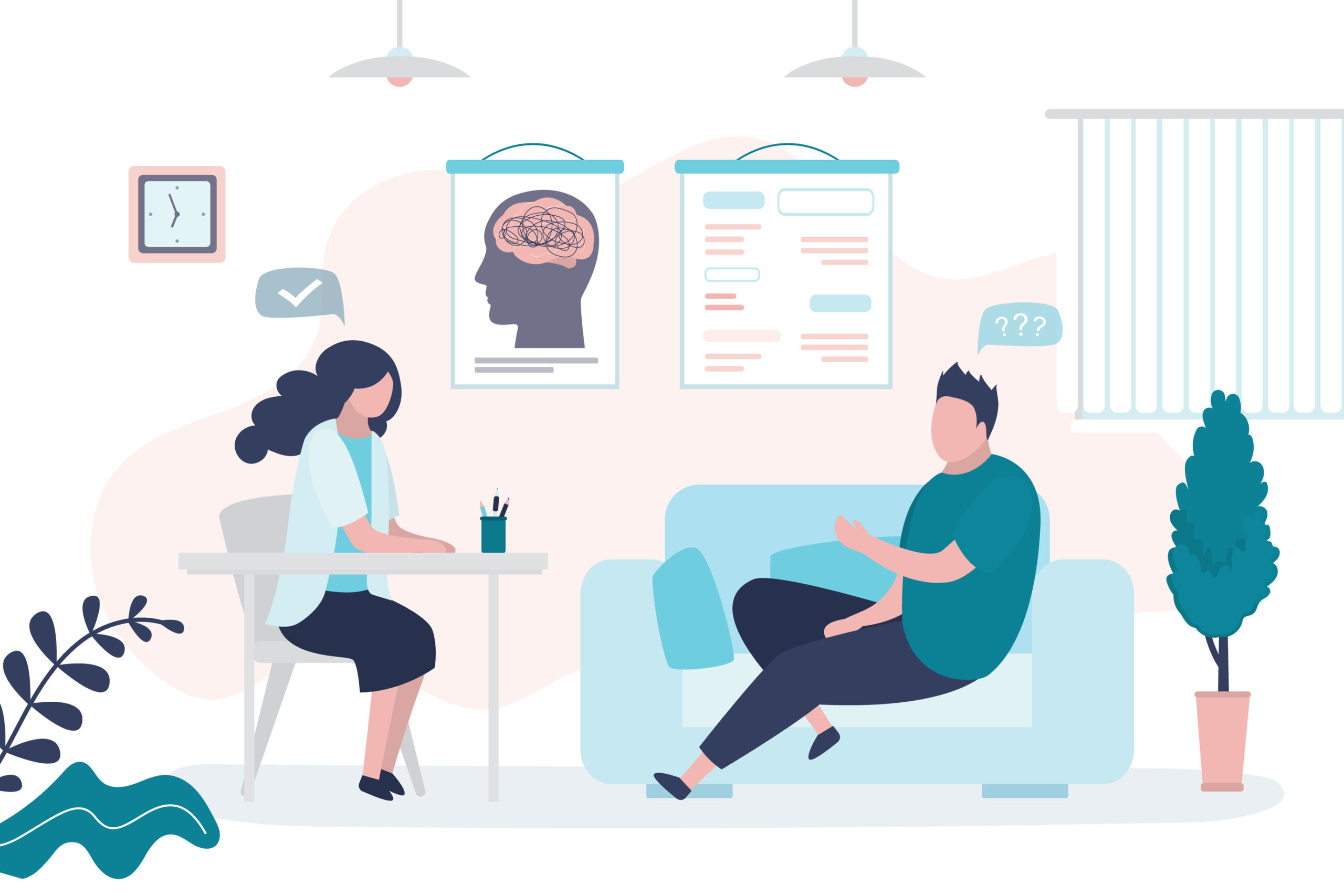Why the Best Psychologist in Delhi Can Change Your Mental Wellness
Wiki Article
Psych Treatment: A Comprehensive Overview to Techniques and Results

Cognitive-Behavioral Treatment
Cognitive-Behavioral Treatment (CBT) is a commonly utilized psychotherapeutic technique that focuses on determining and modifying useless thinking and habits patterns. Created in the 1960s by Aaron T. Beck, CBT combines cognitive and behavior concepts to address different psychological wellness problems, including clinical depression, anxiety, and stress-related conditions.CBT is characterized by its organized, goal-oriented nature. Therapy commonly includes a collaborative procedure in between the specialist and customer, where specific problems are recognized, and practical approaches are created to resolve them. Strategies such as cognitive restructuring, direct exposure treatment, and skill-building exercises are generally employed. Cognitive restructuring entails challenging and altering negative thought patterns, while direct exposure treatment aims to lower concern and anxiety with progressive exposure to been afraid scenarios or items.
Evidence-based study supports the efficiency of CBT for a vast array of mental conditions - Best Psychologist in Delhi. Its focus on skill procurement and self-help strategies encourages customers to proceed progression separately after treatment ends. The versatility and efficiency of CBT have actually made it a foundation in modern psychotherapeutic practice
Psychodynamic Techniques
Rooted in the very early theories of Sigmund Freud, psychodynamic techniques concentrate on discovering the unconscious mind and its influence on habits and feelings. These techniques aim to uncover concealed ideas and feelings that might be driving maladaptive behaviors and psychological distress. Central to this strategy is the concept of inner problem, commonly stemming from unsolved previous experiences, specifically those from childhood.Therapists utilizing psychodynamic methods employ several crucial techniques, including cost-free association, where individuals are encouraged to talk openly to expose subconscious material, and dream evaluation, which translates the concealed web content of dreams. Additionally, the expedition of transfer and countertransference characteristics within the therapeutic relationship is critical. These communications can give insights right into the client's inner world and relational patterns.
Psychodynamic therapy is generally longer-term contrasted to other methods, offering a deep and comprehensive understanding of the individual's psyche. Study indicates that it can be especially reliable for complicated mental wellness problems, such as personality problems and persistent anxiety. By cultivating self-awareness and psychological insight, psychodynamic treatment looks for to bring subconscious material to awareness, making it possible for people to attain meaningful and long-term modification in their lives.
Humanistic Methods
Structure on the structures laid by psychodynamic approaches, humanistic methods offer a distinct viewpoint concentrated on individual potential and self-actualization. Coming from the mid-20th century, these techniques prioritize the inherent benefits and development capacity of people, highlighting a holistic view of human experience. Secret figures such as Carl Rogers and Abraham Maslow have actually considerably influenced this therapeutic strategy, which incorporates methods like client-centered therapy and Gestalt therapy.Client-centered treatment, developed by Rogers, plays a crucial function in humanistic strategies. It counts on the therapist giving a setting of unconditional positive respect, compassion, and congruence. This cultivates a safe room for clients to discover their sensations and experiences without judgment, promoting self-discovery and individual find out this here development. The specialist's function is more of a facilitator than an authority, urging customers to harness their inner sources for recovery.
Gestalt therapy, one more essential humanistic technique, highlights existing minute awareness and the integration of mind and body. By concentrating on the "present moment," clients obtain better understanding right into their existing feelings and actions. Methods such as role-playing and assisted visualization are frequently used to aid customers get a deeper understanding of themselves, inevitably leading to boosted self-awareness and fulfillment.
Integrative Treatments
Integrative treatments represent a synthesis of different restorative techniques customized to fulfill the distinct needs of each client. This approach acknowledges the complexity of human psychology and the complex nature of psychological wellness problems. By combining components from different institutions of psychotherapy-- such as cognitive-behavioral treatment (CBT), psychodynamic treatment, and humanistic approaches-- integrative therapies provide a more all natural and versatile treatment standard.Specialists of integrative therapy analyze each customer's specific demands, signs, and personal background to create a personalized treatment strategy. This individualized technique enhances the capacity for restorative success by resolving the origin of mental distress and promoting total wellness. Methods might include mindfulness workouts, cognitive restructuring, and emotional processing, each chosen to target various facets of the client's concerns.
In addition, integrative therapies stress the healing partnership, viewing the client-therapist bond as an essential element of efficient treatment. This partnership promotes an encouraging setting where clients really feel secure to check out and resolve their concerns. The versatility of integrative treatments makes them ideal for a wide array of problems, including stress and anxiety, anxiety, injury, and interpersonal problems, thereby boosting their applicability and performance in varied clinical settings.

Gauging Treatment Results
Reviewing the effectiveness of psychiatric therapy is important for both medical professionals and customers to ensure that the treatment is generating the desired results. To accomplish this, numerous approaches and devices are employed to measure therapy outcomes systematically. Standardized assessment tools, such as the Beck Anxiety Stock (BDI) and the Generalized Anxiousness Disorder 7 (GAD-7), give measurable data on sign intensity and changes gradually.In addition to standardized devices, qualitative approaches like customer self-reports and scientific meetings provide important insights into the personal experiences and viewed development of customers. Routinely scheduled examinations, normally at the start, omphalos, and end of treatment, aid in tracking the trajectory of renovation or determining locations requiring modification.
Result dimension is not restricted to symptom reduction; it additionally includes practical improvements in life, such as much better interpersonal connections, boosted work performance, and enhanced total health. Modern advancements in digital health have actually introduced mobile apps and online platforms that assist in real-time surveillance and feedback, further refining the analysis process.
Eventually, an extensive strategy to gauging treatment outcomes makes sure that my review here restorative treatments work, efficient, and customized to fulfill the private needs of customers, therefore enhancing the total restorative experience.
Conclusion
Humanistic methods concentrate on personal growth and self-actualization, while integrative treatments integrate numerous techniques for tailored therapy plans. Examining therapy outcomes with qualitative techniques and standard evaluations makes sure a detailed understanding of effectiveness, eventually directing clients toward withstanding psychological health and wellness enhancements.From the organized technique of Cognitive-Behavioral Treatment (CBT) to the deep expedition of the subconscious in psychodynamic therapy, each technique brings special benefits. Its focus on skill procurement and self-help methods encourages customers to continue progression separately after therapy concludes (Best Psychologist in Delhi). Secret numbers such as Carl Rogers and Abraham Maslow have actually considerably affected this restorative technique, which incorporates techniques like client-centered treatment and Gestalt therapy

Report this wiki page